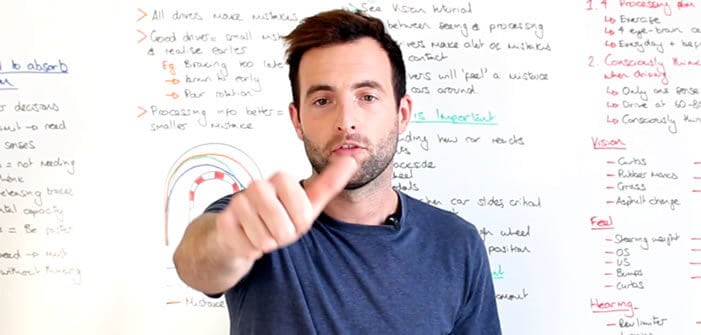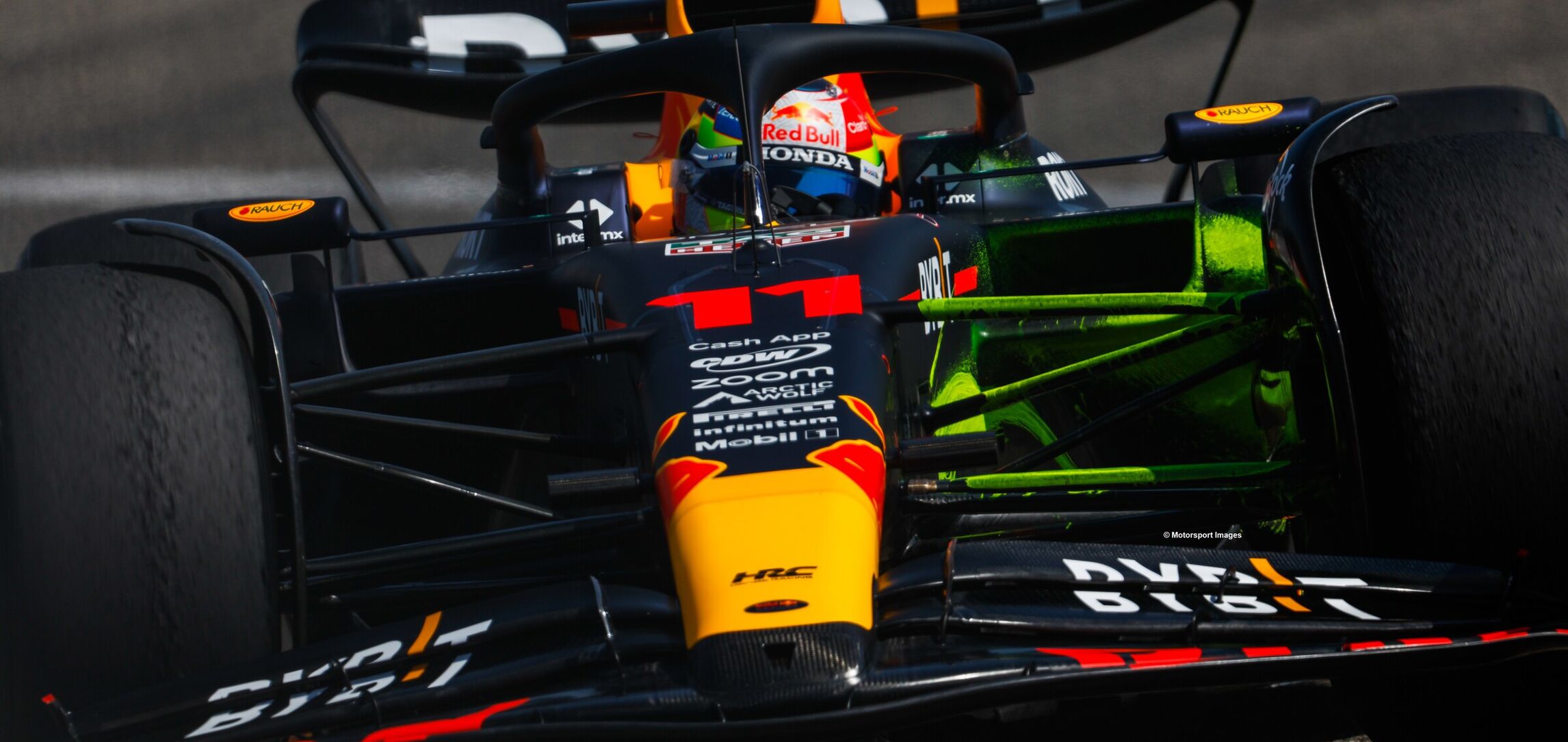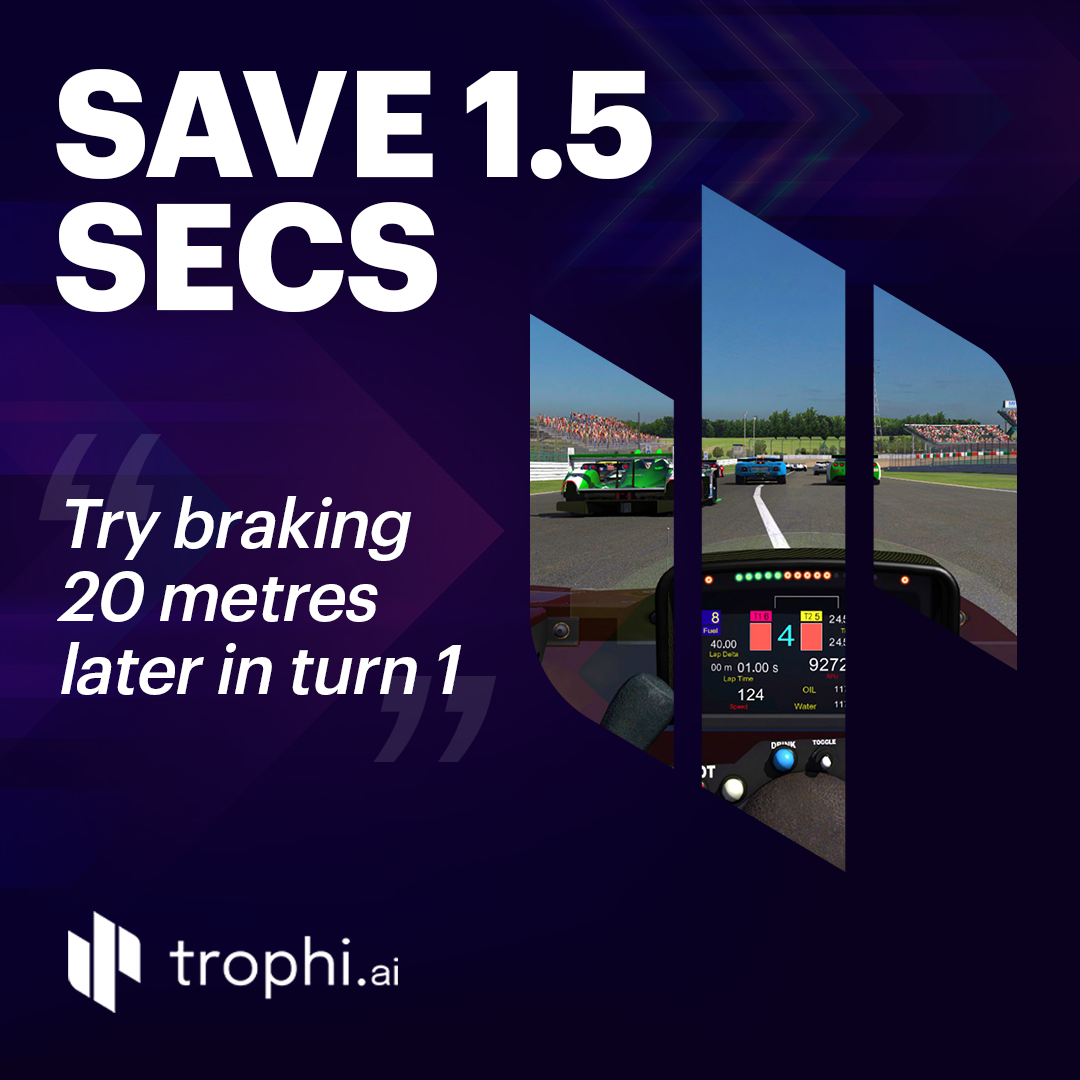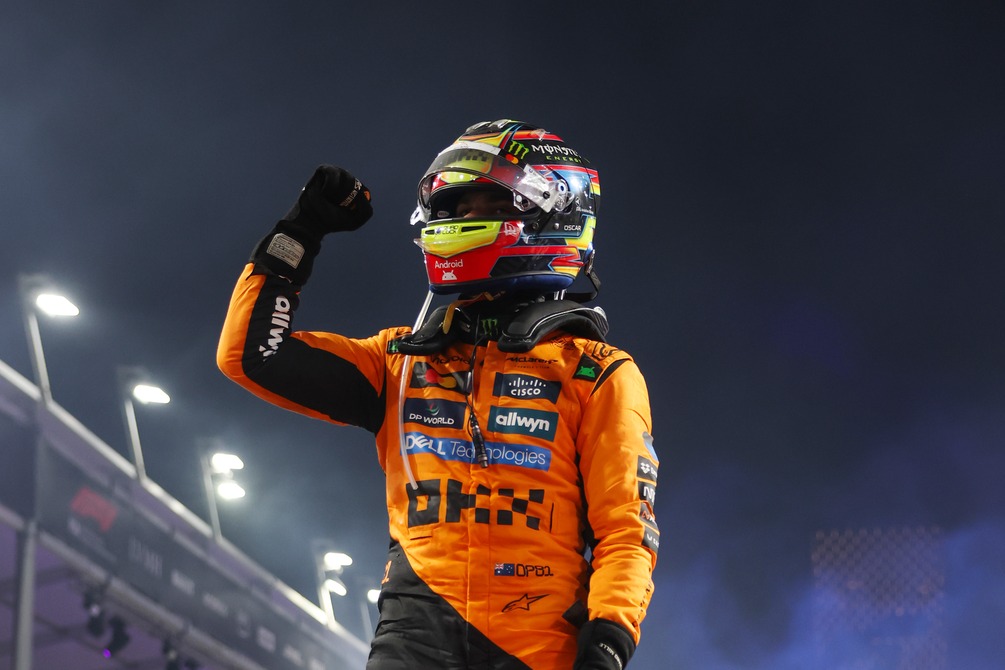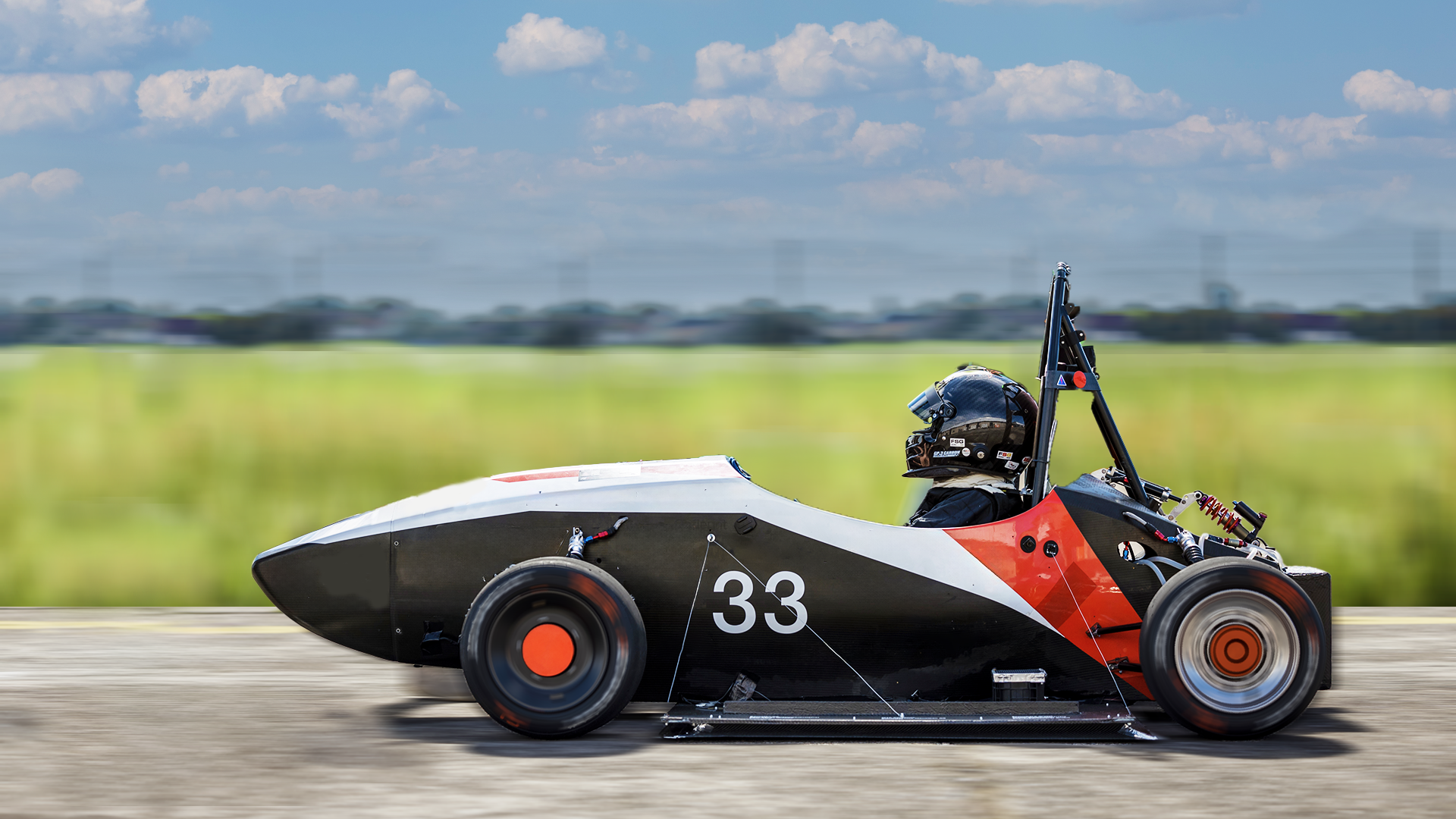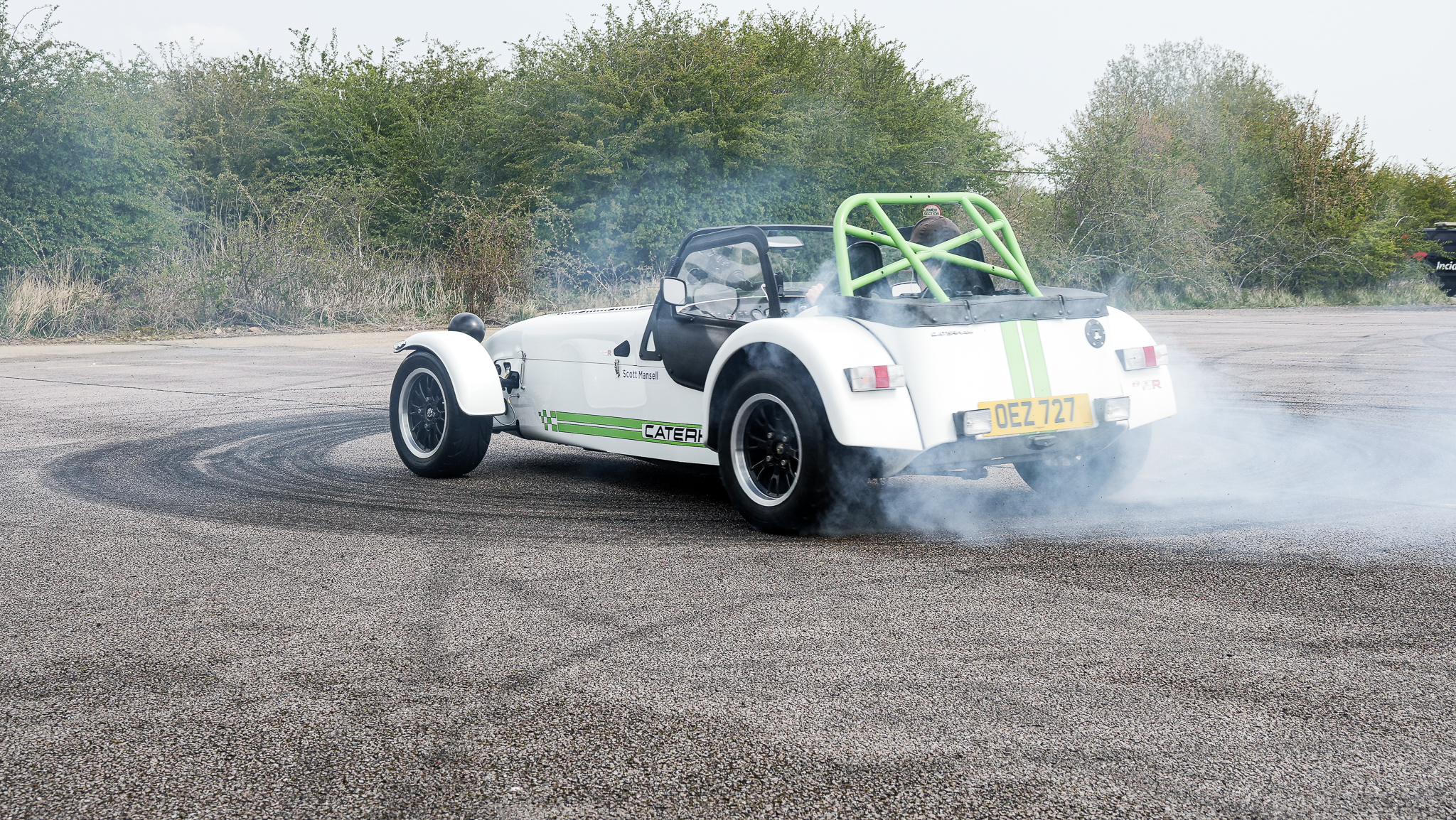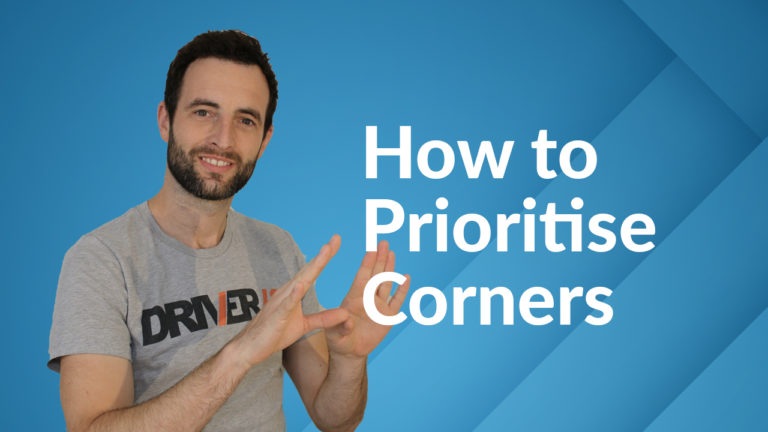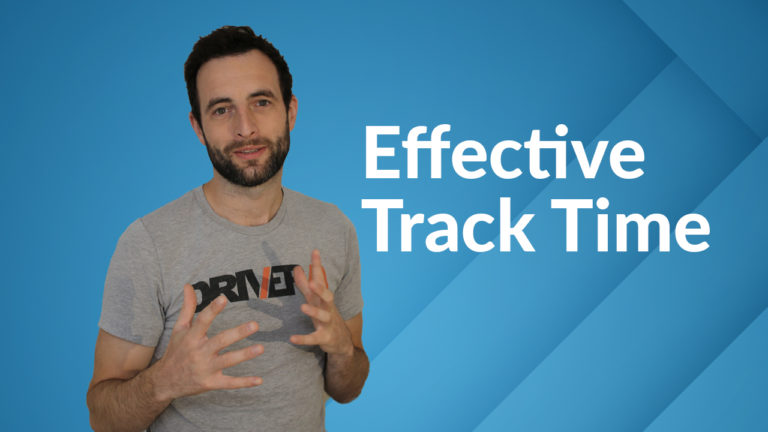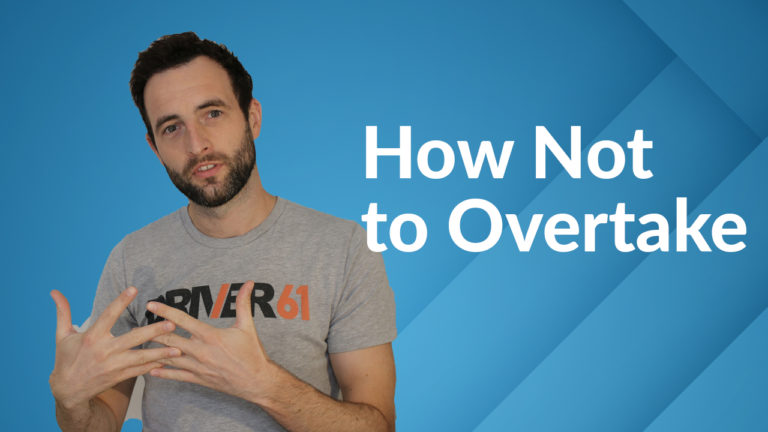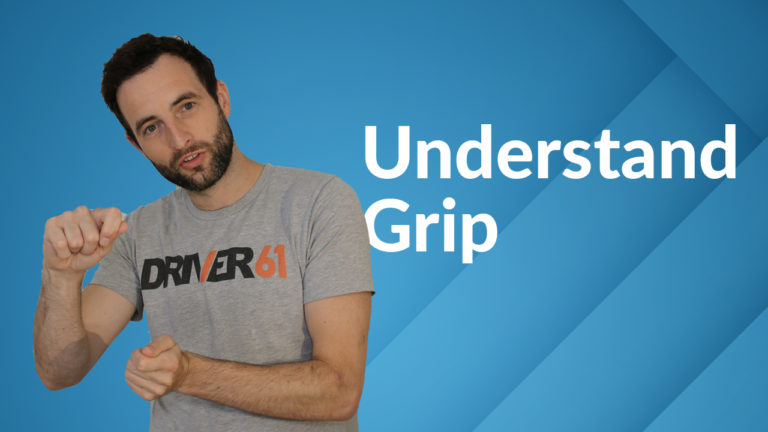How To Fully Utilise Vision, Feel & Hearing
When driving on track, our aim is always to be learning, improving and ultimately decreasing our lap time.
To do this, we must absorb as much information from the car and circuit as possible, through the various senses we use while driving.
When driving on track, our aim is always to be learning, improving and ultimately decreasing our lap time.
To do this, we must absorb as much information from the car and circuit as possible, through the various senses we use while driving.
Every input we place into the car, whether it be braking, steering or acceleration, comes from what we see, feel and hear.
Therefore, it’s critical that we make the most of these senses and absorb as much information as possible so that we can optimise every part of our driving.
The more information we digest from the car and circuit – grip levels, braking references, tyre screeching, g-force, speed, oversteer and so on – the more likely we are to be quick.
Today’s tutorial will explain why we need to be more sensitive and how we can focus our attention on each sense to process more information and to be faster on track.
As mentioned, we’re going to cover the three senses we use when driving:
- Vision
- Feel
- Hearing
I’ll discuss each sense separately, including why it’s important, before examining exactly how we can use our time on track to heighten these senses and ultimately make us feel more ‘at one’ with both car and circuit.
Why do we need to absorb more information?
As I’ve already briefly spoken about, the more information we have – about almost anything really – the better decisions we can make.
In racing terms, the more we understand about how hard we can turn, how much the kerb will unsettle the car, how late we can brake and so on, the closer we can be to the limit at all times when on track.
And as we examined in the driving at the limit tutorial, to be fast we need to be on the limit – or slightly under or over – all the way through the braking zone, turn-in, mid and exit phases of a corner. You can also watch the corresponding tutorial of how to maximise each phase here, here, here and here.
If you think your senses are at their maximum sensitivity already, then you’re probably mistaken. Your sensitivity isn’t set in stone, and it’s possible to improve each one so that we can become better drivers.
Another advantage of heightening your senses is that when you compute more and more information, it will become second nature, embedded in your subconscious.
If you absorb this information so well that you don’t have to think about it – braking references, bumps, marshalls posts, etc. – then we leave more mental capacity for other things, such as thinking about how the car’s handling or where we can overtake the driver ahead.
Opening up mental capacity is one area that makes a huge difference to drivers, a quick driver doesn’t need to think consciously about how to apply opposite lock or exactly when to release the brake pedal – it all happens too fast for that.
Improve any one of your three senses used when driving and you will also improve on the circuit – driving quickly will feel that bit easier.
An important point to understand – and a common mistake with beginner drivers – is that you cannot force yourself to go faster. Trying too hard causes harsh inputs, big errors and possible shunts.
Think of improving your technique like a long checklist. You must perfect each point – and make it natural or subconscious – before you move onto the next.
If you can’t drive each technique – whether it be vision, racing line or driving at the limit – without thinking about it, then you’ll be completely overwhelmed if you try to do them all together.
This means that a driver who tries too hard to be fast using brute force might be relatively quick initially, but will stay at a lower level for a long time because he doesn’t have the mental space to think about more advanced techniques and improve.
Added Benefit – Make Fewer Mistakes
Absorbing more information by increasing our sensitivity will also help use to make fewer mistakes.
All drivers make mistakes – even the best drivers will have tiny differences in braking points and racing lines lap-by-lap.
First, the errors are smaller. It’s not like a quick driver will miss every apex by 10 metres.
But the second point, which is related to this article, is that they’ll understand they’ve made a mistake earlier and adjust their technique accordingly.
There can be a big difference in how quickly a beginner driver and a pro driver recognise when a mistake is happening.
Imagine you brake five metres too late for a hairpin. Because you’ll be carrying too much speed, you’ll not be able to turn in at your usual point, and so your apex will be different.
The diagrams below show the differences between the ideal line (if we braked at the correct point), the line of a pro who realised his error and minimised the cost of the mistake and the line of a beginner who didn’t realise until later, resulting in a substantial time loss.
The pro driver will realise that he’s entering the corner too quickly and in this case, keep the car in a straight line, on the brakes, a little longer before he turns in.
He’ll have lost some time during the entry phase. However, he has now opened up the corner more and can get the car’s platform flatter earlier and on the throttle sooner.
Perhaps the driver in question has lost a bit of time on the entry, but he’ll make a lot of it back up on the corner exit and down the following straight as the corner exit will be slightly better than normal.
The beginner driver, however, doesn’t realise he’s going into the corner too quickly and begins to turn the car at the same position and same rate as normal.
Obviously, if we carry more speed in than optimal, the tyres can’t take the load and either the front or rear will break traction. In this case, we’re going to say the car understeers past the apex.
By the time the beginner driver realises what’s happening, he’s way past the apex and rather than getting back on the throttle and getting a great exit, he has to lift off. At this point in the corner, a lift is extremely detrimental to lap time.
So what’s the difference between the two drivers?
It’s the amount of information each driver can process, to understand exactly where the braking point is, how fast they’re going, how the car is turning and exactly what position on track they’re at.
The sensing and fast processing of all of these data points mean that the pro doesn’t notice much difference in lap time, whereas the beginner may have lost upwards of a second.
Why Processing Visual Information Quickly is Important
I’ve already spoken about the importance of vision as a fundamental technique to get right in a previous tutorial (see it here).
However, there is a difference in seeing lots of information about the circuit – your position, braking references and so on – and processing and making use of that information.
If you have watched any form of racing, whether it be Formula One, Indy Cars or BTCC, you’ll probably have noticed some drivers who always seem to ‘get into trouble’ and some who appear to have a sixth sense.
Obviously, drivers can sometimes be lucky or unlucky, but there is usually something else at play too – how much information the driver is processing.
Often, I’ll ‘just feel’ that a competitor might be about to overtake, but it’s not because I have eyes in the back of my head.
Rather, it’s because I may have caught the beginning of an overtaking move as a flash in the mirror, and then spotted a shadow in my peripheral vision.
Increase how much visual information you process and driving quickly on track will feel easier, and you’ll make fewer big mistakes too.
Why Feel is Important
Feel allows a driver to understand how the car is reacting to his inputs – whether it be through your backside, the steering wheel or the pedals – if the car is at the limit, if the front is sliding or if the rear is loose.
As I explained in the Driving at the Limit tutorial, to be fast a driver must be very close, if a little over, the limit.
When the car is moving around beneath you, you’ll feel it through your whole body. Taking this information, processing it and releasing if the car is sliding is critical to being fast – and keeping it out of the wall.
You’ll also feel references like bumps and kerbs through your body and while you may not consciously think they mean much, they’re all indicators of your position on the track.
For example, I cannot tell you exactly how many meters I am from the Bus Stop chicane at Spa when I brake, but I do know it’s around 15m meters after the bump.
Driver’s will also feel a lot through their steering wheel, almost confirmation of what their backside is telling them.
With understeer, you’ll feel the steering become lighter than it was before the car slid. With oversteer, you’ll feel the steering naturally want to pull to opposite lock.
You’ll receive the information through the steering wheel as the slide is happening, rather than before it, but it’s still valuable information.
Why Hearing is Important
While not as important as your vision or feel, your hearing still helps you drive on track.
You’ll use this sense in a variety of ways including knowing when to upshift, aiding the detection of wheelspin, when you have a tyre locked and where a competitor might be launching an overtaking manoeuvre.
How to Improve Your Sensory Processing
There are few thing things I ask my drivers to do when we’re focusing on improving how they process all the information they’re receiving on track.
As you receive so much information from your eyes when driving, it’s important that we make the most of our vision.
Before we head out on to the circuit, we’ll do an eye exercise, which will improve the connect between your eyes and your brain and allow you to process more visual information. I first read about this technique in Ross Bentley’s excellent book, Speed Secrets.
Keeping your head still, put your right hand (and afterwards your left) out in front of you, making a fist with your thumb sticking out. Then, trace a figure of eight with your thumb, following it with your eyes.
You may notice a little jumpiness with your eyes initially, but the idea is to do this exercise enough so that your eyes move smoothly – and don’t miss any information when on track.
I ask my clients to do this exercise once or twice a day for around a minute and also 15 minutes before they jump into a track session. Many drivers report they feel an increase in awareness on circuit, even after only the first exercise.
The other activity we work on when trying to improve how we understand our senses is to spend separate sessions focusing on one sense at a time – vision, feeling and hearing.
We do this because trying to heighten all of your senses at once simply causes overload, there’s just too much information to take in.
It’s a good idea to only drive at 80% of normal speed, allowing some capacity for this extra information and actually thinking about it.
In the first session, focus on your vision. The aim is to try and take in more visual information. Things to take note of can include (plus much, much more):
- lumps in kerbs
- rubber marks
- tuffs of grass
- changes in asphalt
- curves in white lines
- bridges over the circuit
- patches of dirt
In the next session, again lapping at around 80% of normal speed, but focus on feeling. Points to concentrate on this time can include:
- the steering weight
- if the car is rotating and where
- if the car is understeering and where
- bumps in the circuit
- how the kerbs feel
- what the car is like at turn-in
- how much the car rolls
- how much brake pressure you’re applying (can it be more?)
And finally take a short session to think about your hearing, including:
- the tone of the engine at max rpm
- can you hear a brake lock?
- can you hear the tyres sliding?
- what do the kerbs sound like
- can you hear other cars around you?
- what does a good downshift sound like?
Individually focusing on the senses will help you become more aware, even if you’re only driving around at 80% of your optimal speed.
When you concentrate in this way, you’ll notice some things you’ve never seen before. Then, when you go out and drive normally again, you should be able to process more information.
A good strategy is to debrief yourself after the sessions. Take a notebook and separately write down everything that you saw, felt and heard.
Visualise each straight and corner for each sense, and think about all of the detail of the car and circuit. This ‘downloading’ process is very helpful when trying to open up your information processing abilities.
In Summary
Improving your ability to process the massive amount of information you receive when driving on track can make a significant different to your speed and consistency – so taking the time to do these exercises now and then is well worth the effort.
Ensure that you focus on each sense individually and that you don’t push your yourself too hard – it’s very easy to go over mental capacity and make a silly mistake.
However, once you’ve practised these exercises a few times, you’ll have more information you can use to be faster and make fewer mistakes.
Thank very much for reading, if you enjoyed this tutorial please share it with your social media. See you next time, Scott.


